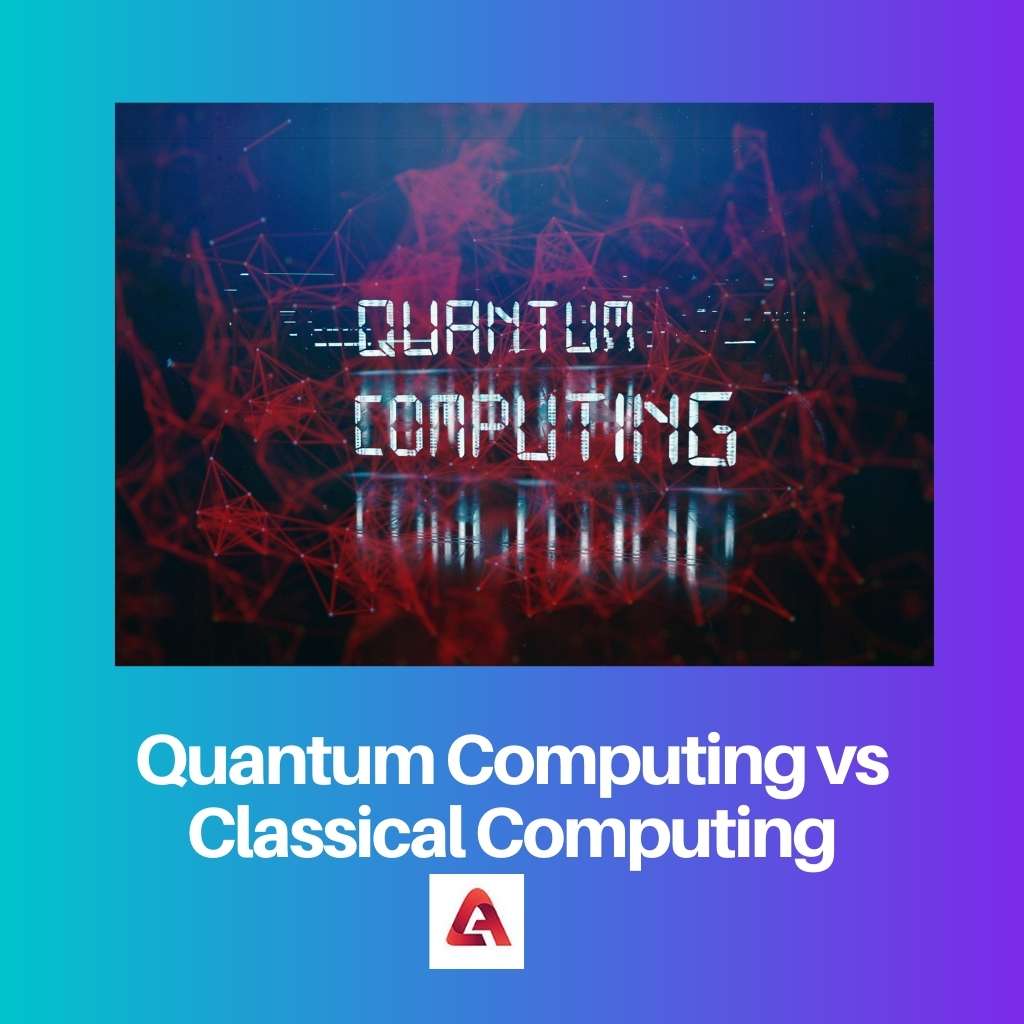Quantum computing and classical computing are two different phenomena. The world is transforming into new with its growing technology mind.
Quantum and classical computing are a part of the conversion of the technology world. They provide a massive subsidy to the transformations and solutions for real-world problems.
Key Takeaways
- Quantum computing utilizes qubits for processing information, while classical computing uses bits.
- Quantum computers can solve complex problems faster than classical computers.
- Quantum computing is still early, whereas classical computing is widely used and understood.
Quantum Computing vs Classical Computing
Quantum computing is a relatively new technology that uses the principles of quantum mechanics to process information and create powerful algorithms for solving complex problems. Classical computing relies on the traditional binary processing methods limited by physical constraints.

Quantum computing is a massive phenomenon. The word quantum means atomic or subatomic particle in physics. The unit of information in quantum computing is called qubits.
The qubits in quantum computing will hold a superposition of all the possible states. But the qubits work similarly to the bits, whereas bits are present in classical computing.
Quantum computing is the word that holds the meaning quantum mechanics. Quantum mechanics is nothing but the system used to compute the output.
Classical computing is also called binary computing. Classical computing is a traditional approach. In classical computing, the bits are represented either as 0 or 1.
Classical computing work contrastingly to quantum computing. Classical computing represents either 1 or 0, whereas quantum computing represents 1 and 0.
Classical computing does not need expensive infrastructure and specialized systems. Classical computers avoid the outside radio waves and light to execute error-free results or output with fewer errors.
Comparison Table
| Parameters of comparison | Quantum Computing | Classical Computing |
|---|---|---|
| Error rates | Quantum computing has a high error rate | Classical computing has a less error rate |
| Best suitable | Quantum computing is best appropriate for data analysis | Classical computing is best suitable for the daily processing |
| Possible states | Continuous | Discrete |
| Information processing | Using quantum logic | Using Logic gates like AND, OR |
| Operations | Boolean algebra | Linear algebra |
What is Quantum Computing?
Quantum computers come with three primary components. They are an area for qubits, a method for transferring, a classical computer. Every part has its separate tasks.
The significant applications of quantum computing are quantum simulation, cryptography, optimization, and quantum machine learning.
Since quantum computers are fragile, slight vibration will affect the computer and cause decoherence. The working process of quantum computers is based on quantum states.
Quantum states are the backbone of quantum computing. The quantum states are superposition, entanglement, and interference.
1)Superposition
Superposition means showing all the possible states of the qubits.
For example -A twisted coin standing in-between positions while you can see both the head and tail.
2)Entanglement
Entanglement means the qubits get interlaced with one other so that you can conclude one with the other.
For example – Two circles with the same radius have similar measurements at every angle.
3)Interference
Interference happens due to the superposition function. Quantum computers are manufactured with a magnific probability of reducing interference to provide accurate results.
In simple, quantum computing is nothing but growing the technology of computers using quantum theories. In 1980, the quantum computing field started.
Quantum computing contributes to military affairs, the finance industry, aerospace, and drug designing. Many tech giants like IBM, Microsoft, Google are working in the quantum computing field.

What is Classical Computing?
Classical computing works with classical computers. It uses the definite positions instead of superpositions used by quantum computing.
Classical computing uses logical operations for the functions. Classical computers show many limitations for real-world problems, and researchers work to overcome the limitations using quantum computing.
Classical computers can adapt and work at room temperature. Classical computing also has many applications. Classical computing is primarily used in daily needs.
The results are reproduced in classical computing are the primary advantage. The power of decision is limited in classical computing and executes one output.
Classical computing uses transistors for its calculations. The calculations in classical computing are deterministic. The chart against the power will show the straight line.
The graph shows an increase only in the 1:1 ratio. If one flank increases, the other side also increases with the same quantity. It leads to the straight-line graph.
Depending on the number of transistors, the power increases with the relationship against the transistors. The chart of classical computing looks different from quantum computing.
Since classical computing is binary computing, the information is processed serially. In serial processing, we cannot handle a large amount of data.
They show many limitations and restrictions over tremendous data. The data handling will be challenging in classical computing, which is a prominent disadvantage of classical computing.
The value of the analysis process also decreased in classical computing. It forces the developers to reduce the data size and limit the information.
Main Differences Between Quantum Computing and Classical Computing
- In quantum computing, the graph increases according to qubits, whereas in classical computing, the graph increases in a ratio of 1:1.
- You need to retain ultracold conditions for quantum computing, whereas room temperature is enough for classical computing.
- In quantum computing, quantum mechanics will govern the circuit behavior, whereas, in classical computing, classical physics will govern the circuit behavior.
- On comparing quantum computing, classical computing has less restriction on copying signals.
- Quantum computing is microscopic, whereas classical computing is macroscopic technology.

